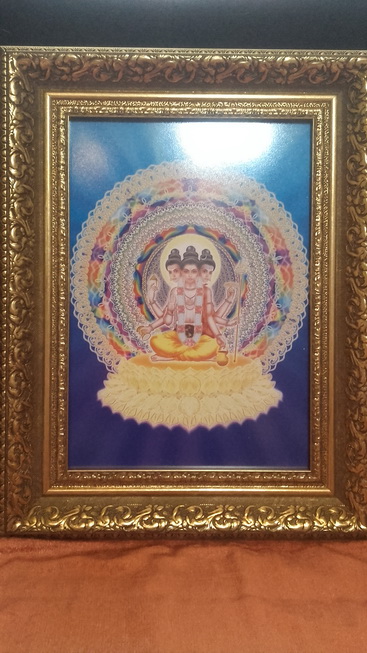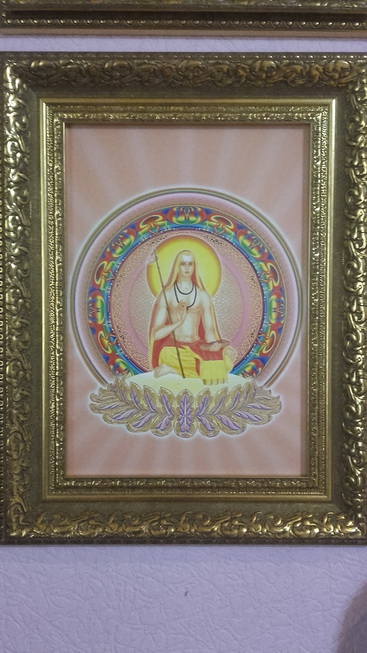How to create a home altar
An altar is a mystical place in our home, from which we invoke blessings and inspiration, receive protection and help from saints, gods, rishis and siddhas, purify the mind, sanctify objects, strengthen the connection with deities, with the line of transmission of the Teaching and the Master.
The altar personifies the Tree of Refuge, that is, the Tree of the line, on which we rely, we assume as our protection and support, it is the materialized Tree of Refuge. And the Tree of Refuge itself is a mystical channel (deva vahini) for communication with divine beings and the forces of the universe. A sadhu's refuge is the source of his spiritual strength, his protection and support. And if we wish to reveal the inner deities, invoke the blessings of the saints, enter the space of siddhi, pure vision, then it is important to always remember about Refuge.
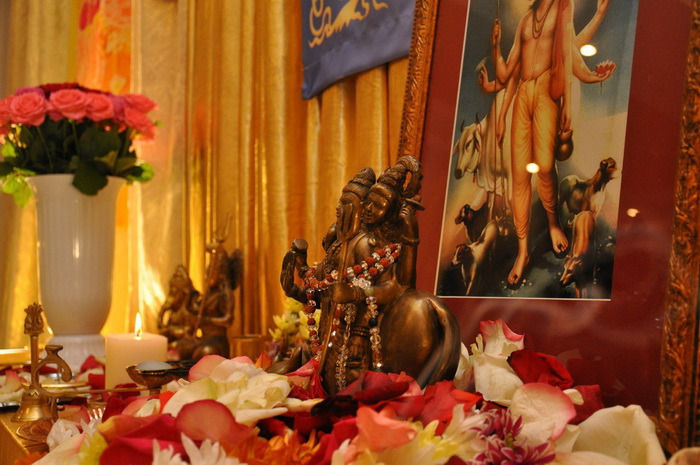
Altar location
According to the science of Vaastu, the northeast (the seat of God) is considered the ideal place for the altar, you can also place the altar in the east or in the north.
The altar should be located at chest level so that it is comfortable to use the items on the altar while sitting. If the images are located on the wall, then they should be clearly visible from below.
Altar decoration
For a home altar, an altar table or wall shelf can be used, preferably with rounded edges.
All objects are made beautiful, for example:
- made of carved wood or other materials that have not been used, they can be covered with gilding or paint with gilding;
- if the surface requires decoration, it is recommended to use new fabrics: velvet, brocade, silk, predominantly golden in color (white, burgundy is possible).
There should be a table for altar attributes next to the altar. If there is not enough space on the altar for offerings, an additional table should be installed nearby.
You also need an asana (a small rug, pillow) made of cloth to sit or stand on it, offering prasadam or doing puja.
The altar and images must always be kept clean. You can decorate the altar according to your taste.
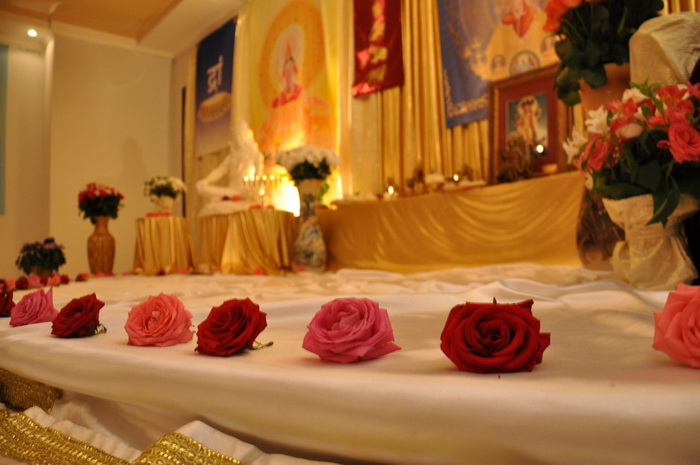
Altar accessories
- Vajra bell consecrated by Guru
- Water vessel
- Candlestick (usually a pair)
- Incense stand
- Vase for petals
- Bowl for ghee or sandalwood paste
- Small cup with a spoon for achamana
- Tray and oil lamp
All dishes are used new: silver, porcelain or metal.
Placing the murti on the altar
The main rule for placing a murti on the altar is to observe spiritual subordination and not to mix images and objects of different traditions and lines of teaching.
The main murti of our tradition:
-
the image of the symbol
OM
or Triantra - located at the very top; -
the murti of Dattatreya as ishta-devaty — is situated in the center;
-
the image of the refuge tree, lineage, saints: Guru Brahmananda, Vasishtha, Shankara, siddhi, etc;
-
murti of the root Guru.
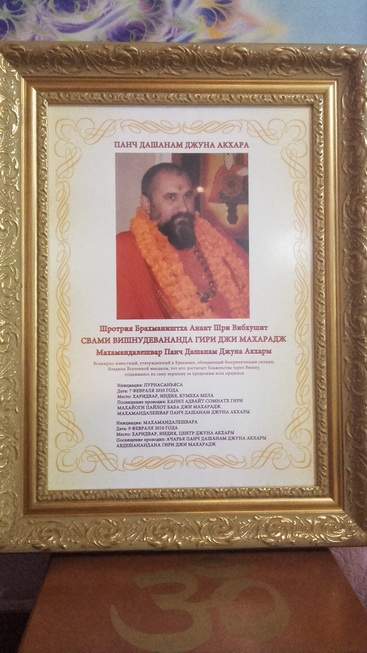
Images can be decorated with garlands or flowers can be placed in front of them.
Consecration of the altar
It is necessary to carry out achamana (purification of space with water). Ritual daily practice of cleansing Achaman.
- 1. We imagine around a simple protective circle with a mantra in which there is a transmission.
- 2. Make offerings on the altar (fruits, yogurt, incense, water, flowers).
- 3. Recite 4 cleansing mantras (Gayatri, Mahamrityunjaya, Asatoma, Guru mantra).
- 4. Visualize the Tree of Refuge directly above our head and in front of us with faith and devotion, reciting a mantra or a prayer of Refuge.
- 5. We represent the descent of blessings from the tree of Refuge, which descend on the altar in the form of a stream of light, flowers, syllables, sounds of mantras.
- 6. Make a mentally grateful offering to the deities and saints of the tree, throwing a pinch of rice and flower petals into the air, sprinkle with the offered water.
We recite the OM
mantra three times at the end of the practice.
Every day practice at the altar
-
1. At dawn, ring the bell and open the curtains (if you have them on your altar). If necessary, wipe down the altar and accessories.
-
2. Offer the symbols of the five elements to the altar: a new incense stick, pure fresh water, ghee or fruit, petals, fire. In a simple daily version, there may be a minimum set: incense, water, fire.
-
3. Sit in sukhasana or vajrasana in front of the altar.
-
4. After doing namaste kriya, chant the
OM
mantra three times, doing Guru yoga and the corresponding visualization, then chant the Refuge mantra:Namo Guru Deva Namo Satya Dharma Namo Arya Sanghathen four mantras:
- - Gayatri;
- - Mahamrityunjaya;
- - Asatoma;
- - Guru Yoga Mantra.
-
5. Make an offering of the five elements while the bell rings. Light a candle, an incense stick, mentally offering all this to the Tree of Refuge.
-
6. If there is time and opportunity - you can, in the extended version, perform any one practice (in which you have a transfer). Begin any invocation with achamana practice of the morning sutra or practice that is performed on Bhajan Mandala. Morning Sutra practice.
-
7. Finish the practice with meditation of 4 Brahma Viharas (4 Infinite states of the Brahma Creator) 3 min. and again Guru Yoga with the OM mantra and the prescribed visualization.
-
8. Ring the bell. Close the altar. The morning practice at the altar is over.
You can do the same practice at noon and in the evening.
If there is no opportunity or time, do it in a short version, i.e. without point 4.
It is believed that all saints and siddhis radiate a steady divine impulse (Anugraha-shakti). Therefore, when tuning to them occurs, this impulse can be received through them.
The Vedas says that in our age of Kali-yuga, the time of the decline of the Dharma, the most effective practice is to invoke saints and siddhas. The easiest way to do this invocation is in a special place - at the altar.
Practice with an altar promotes the yogi on the Path, gives experiences, helps to get in touch with saints and siddhas, to tune in to the Supreme Source.


